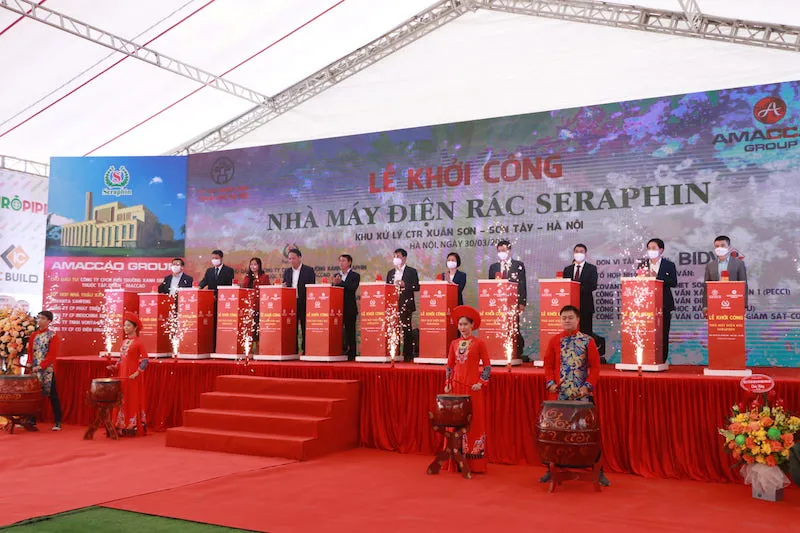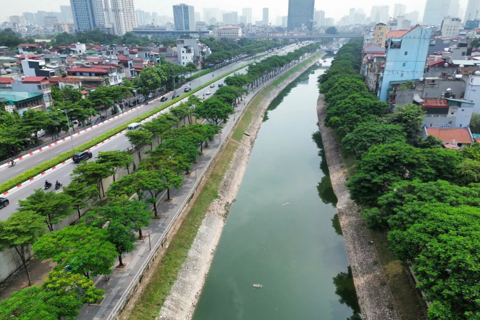Hanoi starts construction of second waste-to-energy plant
The new factory, located on the outskirts of the city, is expected to treat a high volume of waste in the capital city.
The groundbreaking ceremony for the construction of a waste-to-energy factory with a total investment of VND3.5 trillion (US$153 million) was held at Xuan Son landfill, Son Tay Town and Ba Vi District.
| An overview of the groundbreaking ceremony. Photo: Amacca |
The plant, covering 2.5ha, will be equipped with European technology with a daily capacity of burning 1,500 tons of solid waste and generating 37MW of electricity.
It is estimated to be completed within 20 months. Once being put into operation, the factory will help reduce the volume of landfill waste to 3%.
The factory’s parameters on emissions, leachate, odor and noise will be reported to the municipal Department of Natural Resources and Environment and the City People's Committee. At the same time, at the factory gate, there is also an electronic board displaying parameters for local authorities and people to monitor.
Speaking at the ceremony, Vice Chairman of the City People's Committee Nguyen Trong Dong emphasized the significance of the project in protecting the local environment.
In recent years, the city’s authority has resorted to waste treatment with modern technology, considering garbage as a resource for reuse, creating energy, contributing to environmental improvement and economic development.
Dong suggested that relevant departments, branches and localities actively coordinate and guide Seraphin Green Environment Technology JSC, the investor, to deploy the project ensuring quality and progress, and soon put the plant into operation.
The Soc Son waste-to-energy project phase 1 in Nam Son Waste Treatment Complex, the largest in Vietnam, came into operation in January. The plant, at its full capacity, treats 4,000 tons of garbage a day, or two-thirds of the city’s waste.










